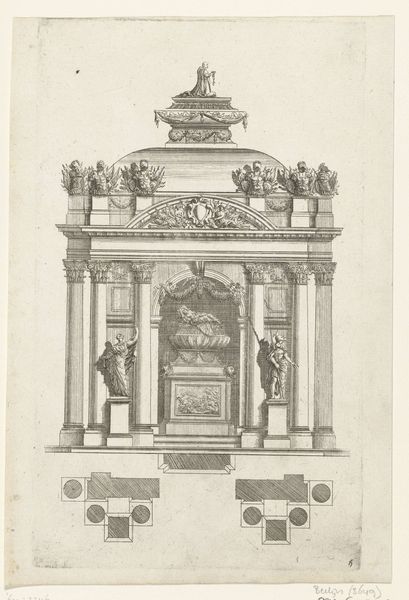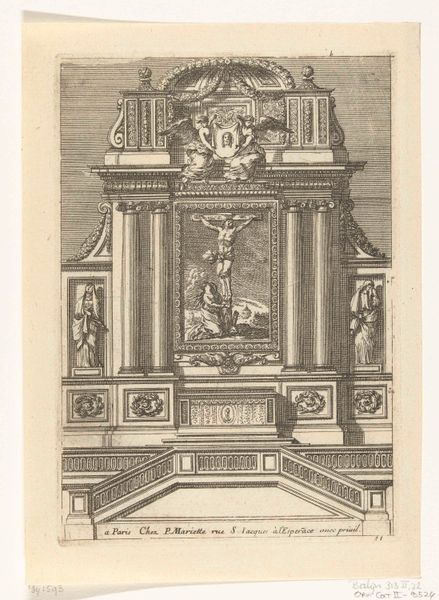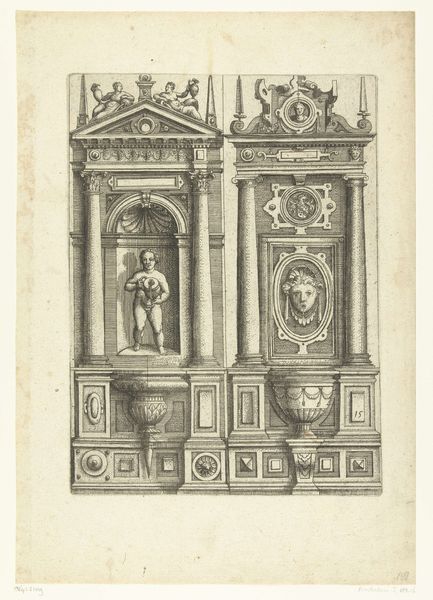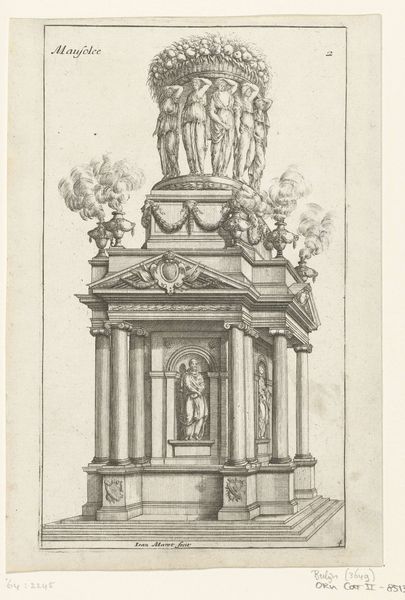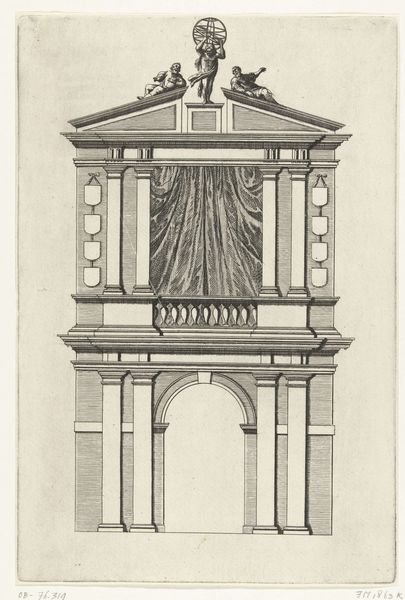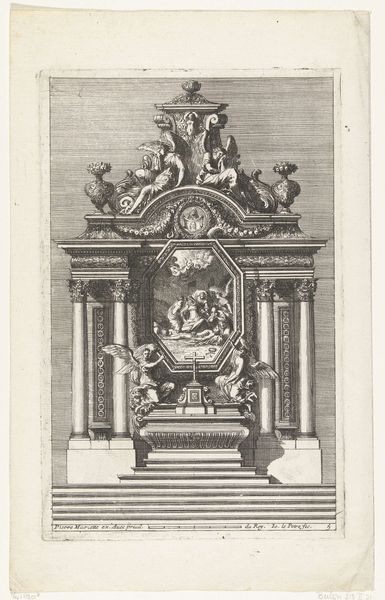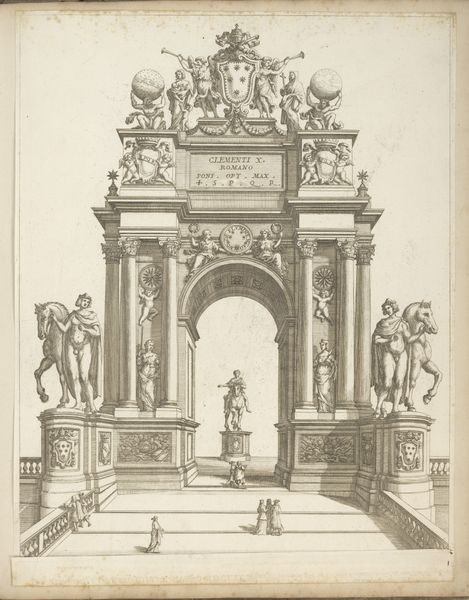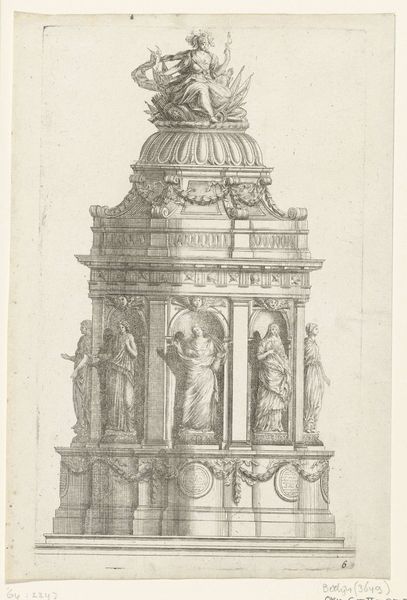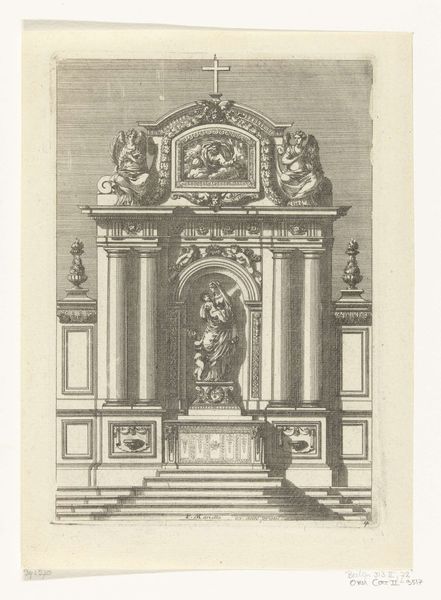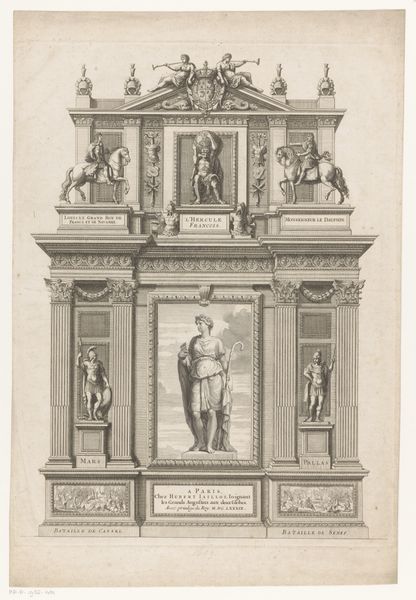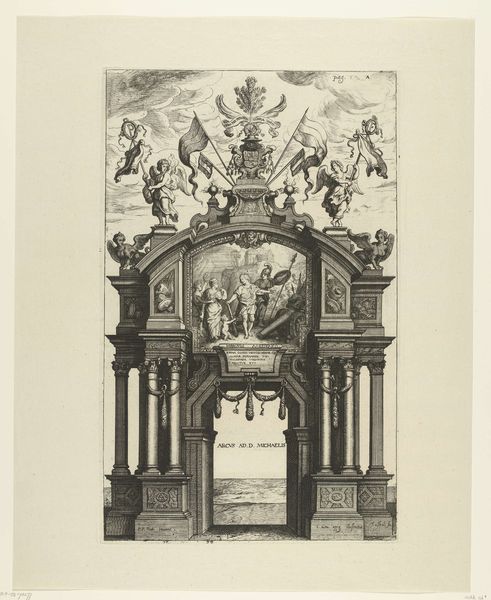
drawing, print, pen, engraving
#
drawing
#
baroque
#
dutch-golden-age
# print
#
old engraving style
#
pen-ink sketch
#
pen
#
history-painting
#
engraving
Dimensions: height 310 mm, width 210 mm
Copyright: Rijks Museum: Open Domain
Editor: Here we have Pieter Nolpe's "Theaterpoort opgericht op de Damsluis, 1642," a pen and engraving print from 1642. The depiction of this temporary celebratory structure is striking in its monumentality. How should we interpret a piece like this? Curator: It's crucial to remember that art like this served specific political functions. This wasn't just decorative; it was a deliberate construction of power and identity. We should analyze the symbolism and consider how this piece reinforces ideas about Dutch Golden Age authority, and even hints at its relationship with the British monarchy with the Royal coat of arms. Editor: I see what you mean! I was initially drawn to its formal qualities, but it’s fascinating to consider the power dynamics at play. Curator: Exactly. The "Theaterpoort" presented an ideal vision. It served as a tool for shaping public perception. Now, what kind of dialogue do you think that creates today, seeing this image? Editor: That makes me wonder about how these grand displays actually impacted everyday life for ordinary people at that time. Did it foster a sense of national pride, or create further divides? Curator: An important question. Understanding those divides, the social realities behind the polished image, is key. This wasn’t necessarily a universally celebrated image; we should acknowledge who was included and excluded from this representation of power. Considering it this way helps me to question my own context and complicity within systems of power. What about you? Editor: I'll definitely look at art, and even architecture, differently from now on, more attuned to their political and social context!
Comments
No comments
Be the first to comment and join the conversation on the ultimate creative platform.

